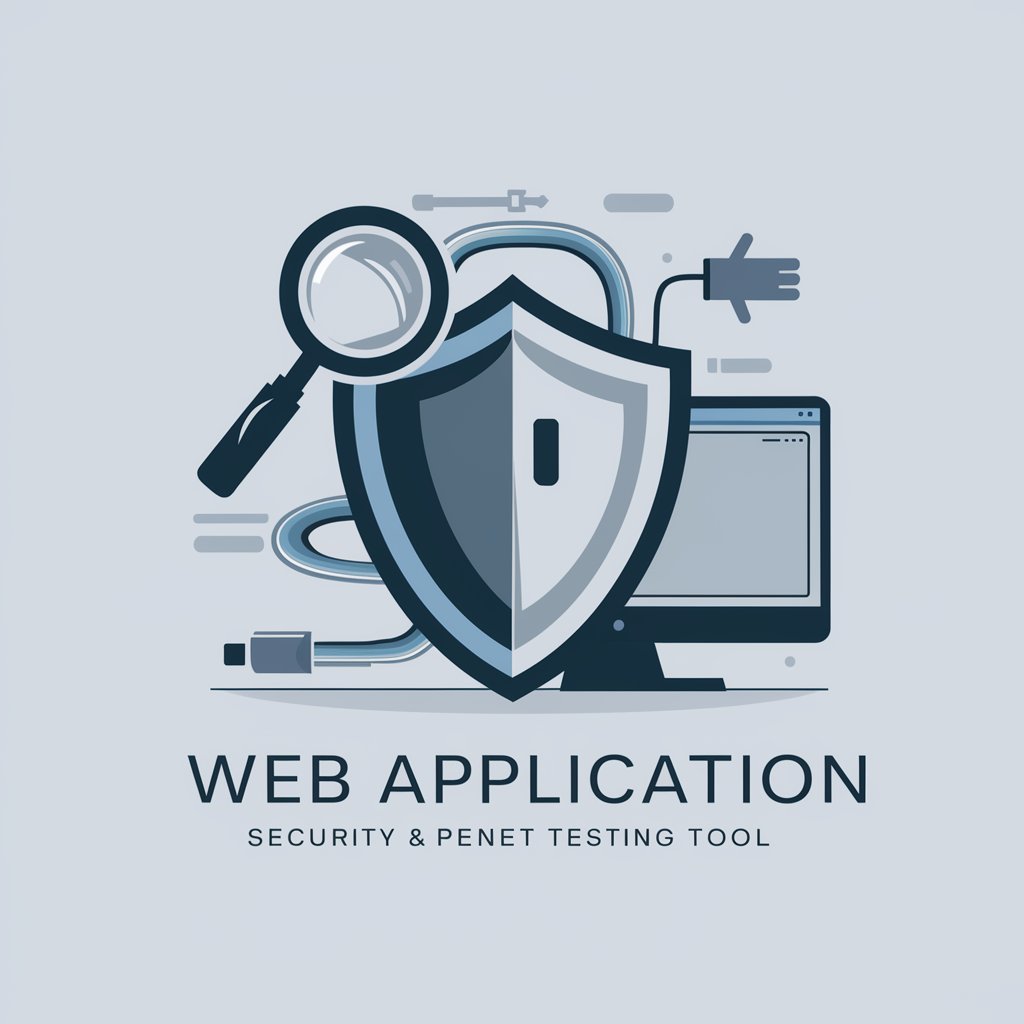Web App Security / Penetration Test Strategies - Web App Security Testing

Welcome! Let's secure your web applications together.
AI-driven Security Assessments for Web Applications
Describe how to set up a basic penetration test for a web application.
What are the most common web application vulnerabilities and how to test for them?
Explain the steps to perform a SQL injection attack and how to prevent it.
Provide a guide on using Burp Suite for web application security testing.
Get Embed Code
Overview of Web App Security / Penetration Test Strategies
Web App Security / Penetration Test Strategies encompass a comprehensive approach to identifying and mitigating vulnerabilities within web applications. This discipline involves systematic testing methods aimed at uncovering security weaknesses that could potentially be exploited by malicious actors. The design purpose behind these strategies is to ensure the confidentiality, integrity, and availability of web applications by proactively identifying and addressing security risks before they can be exploited. Examples of these strategies include conducting vulnerability assessments, exploiting found vulnerabilities to understand their impact, and implementing remediation measures. A scenario illustrating this approach could involve a penetration tester identifying a SQL injection vulnerability in a web application's login form, exploiting it to gain unauthorized access to sensitive data, and then advising on how to secure the form against such attacks. Powered by ChatGPT-4o。

Core Functions and Applications
Vulnerability Assessment
Example
Using automated tools and manual testing techniques to scan a web application for known vulnerabilities.
Scenario
A security team conducts regular vulnerability assessments on their e-commerce platform to identify and patch security weaknesses before they can be exploited by attackers.
Ethical Hacking
Example
Simulating cyber-attacks on web applications under controlled conditions to evaluate their security.
Scenario
An organization hires ethical hackers to test the resilience of their new web application against SQL injection and cross-site scripting (XSS) attacks.
Security Auditing and Compliance
Example
Reviewing web applications against established security standards and compliance requirements.
Scenario
Before launching, a fintech application undergoes a security audit to ensure it meets GDPR and PCI DSS compliance standards for handling customer financial data.
Threat Modeling
Example
Identifying potential threats and vulnerabilities specific to the web application and prioritizing their mitigation based on the risk they pose.
Scenario
During the development phase, a team performs threat modeling on a healthcare portal to identify and mitigate potential threats to patient data privacy.
Target User Groups
Security Professionals
Individuals or teams responsible for maintaining the security posture of web applications, including penetration testers, security analysts, and cybersecurity consultants. They benefit from these strategies by having a structured approach to identifying, exploiting, and mitigating vulnerabilities.
Software Developers
Developers and engineering teams involved in building web applications. Understanding penetration testing strategies helps them code with security in mind, reducing the number of vulnerabilities introduced during the development phase.
Organizational Leadership
C-suite executives, IT managers, and decision-makers who need to understand the security risks associated with their web applications to allocate resources effectively for security initiatives and ensure regulatory compliance.

How to Use Web App Security / Penetration Test Strategies
1
Start by visiting a platform offering free trials for comprehensive web app security assessments, such as yeschat.ai, where no login or ChatGPT Plus subscription is necessary.
2
Familiarize yourself with the tool's features and capabilities by exploring its documentation and user guides to understand its scope and how it can be tailored to your needs.
3
Identify the specific web application or area within your infrastructure that you wish to test for vulnerabilities. This could range from frontend user interfaces to backend APIs.
4
Utilize the tool to conduct a series of tests, including but not limited to automated scanning for common vulnerabilities, manual penetration testing techniques, and security audits.
5
Review the test results comprehensively, prioritize the identified vulnerabilities based on their severity, and develop a remediation plan to address these issues efficiently.
Try other advanced and practical GPTs
Math Tutor
Empowering Young Minds with AI-Driven Math Learning

Job Searcher Deedie
Streamlining Your Job Hunt with AI

Funny Bones Stand Up Comedy Smart Badger
Crafting Laughter with AI Creativity

Jesus Christ
Divine insights for everyday life

Bible Insight
Unlocking Biblical Contexts with AI

Nirvana Songcraft Guide
Craft Songs with AI, in the Spirit of Nirvana

GPT - Store chat
Empowering your ChatGPT with tailored plugins

Riscrivere Il Testo
Revolutionize your writing with AI

Corrector Ortografico
Perfecting Text with AI Precision

Advanced Shell Assistant
AI-powered shell scripting expertise at your fingertips.

Advanced C++ Assistant
Elevate Your C++ Skills with AI

Madlibinator
Craft stories with a witty AI twist.

Detailed Q&A on Web App Security / Penetration Test Strategies
What are the prerequisites for using Web App Security / Penetration Test Strategies?
The prerequisites include a basic understanding of web technologies, familiarity with the specific web app's architecture you're testing, and access to a platform offering security testing tools.
Can Web App Security / Penetration Test Strategies detect all types of vulnerabilities?
While these strategies aim to identify a wide range of vulnerabilities, from injection flaws to misconfigurations, no tool can guarantee the detection of all possible issues, emphasizing the importance of continuous testing and updates.
How often should I conduct penetration tests on my web applications?
The frequency of tests depends on various factors, including the application's complexity, the sensitivity of the data it handles, and any recent changes or updates. However, a general best practice is to conduct tests at least annually or after significant updates.
What makes manual penetration testing important in addition to automated scans?
Manual testing is crucial for identifying logic-based vulnerabilities that automated tools might miss, providing a deeper understanding of potential security flaws and how they could be exploited.
How should I prioritize vulnerabilities found during testing?
Vulnerabilities should be prioritized based on their severity, the ease of exploitation, and the value of the affected assets. This helps allocate resources effectively to mitigate the most critical issues first.
